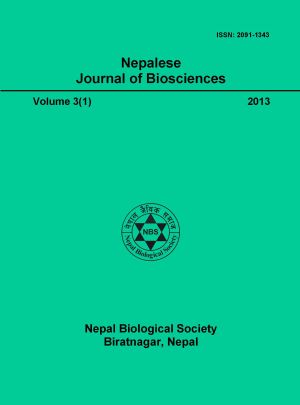Status of "Wetland ecology" education and research at the Department of Environmental Science, Institute of Agriculture and Animal Science of the Tribhuvan University, Nepal
DOI:
https://doi.org/10.3126/njbs.v3i1.41451Keywords:
Environmental education, wetland education, research projects, teaching and learning approachesAbstract
Wetlands are considered as the most productive ecosystems and cradles of biodiversity harboring a wide variety of flora and fauna. They maintain and provide a variety of environmental services to the human beings including fish and wildlife habitats, flood protection, erosion control and water quality maintenance (Tiner, 1989). Despite their value, wetlands have suffered from widespread destruction due to misuses and abuses (CP, 2005). Wetlands are threatened by population growth, increased exploitation of biological resources, timber harvest, pollution of various forms, development activities and other forms of mis-management (Kerr et al., 2002). So, wetlands need to be preserved and utilized wisely for the livelihood enhancement. To implement this task, countries need a sufficient number of experts and technical staff who are qualified and enthusiastic to work in the field of wetland conservation. So, the role of universities become crucial to launch academic programs for producing man power that can understand wetland ecology and their services and influence and make policy for wetland conservation and management. Because of their widespread distribution and biological, chemical, and physical complexity, wetlands are excellent “living laboratories” for teaching (Baldwin, 2007).




